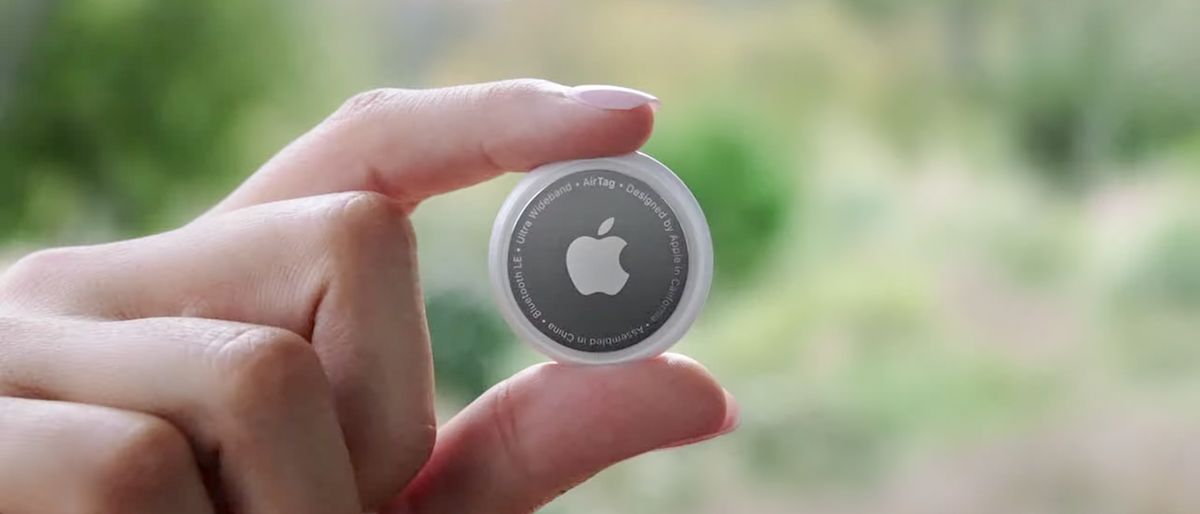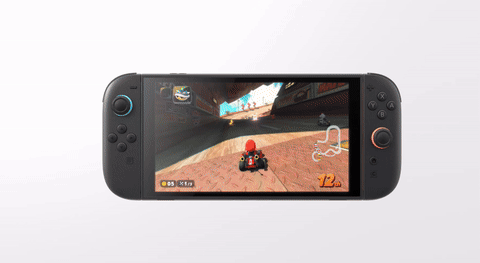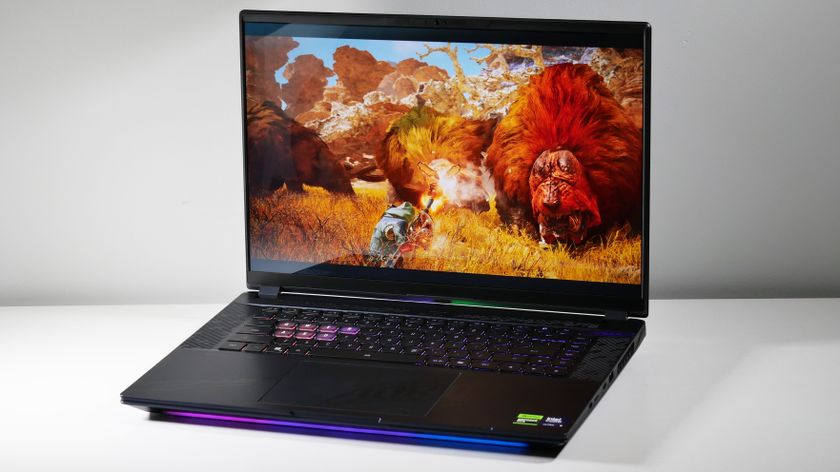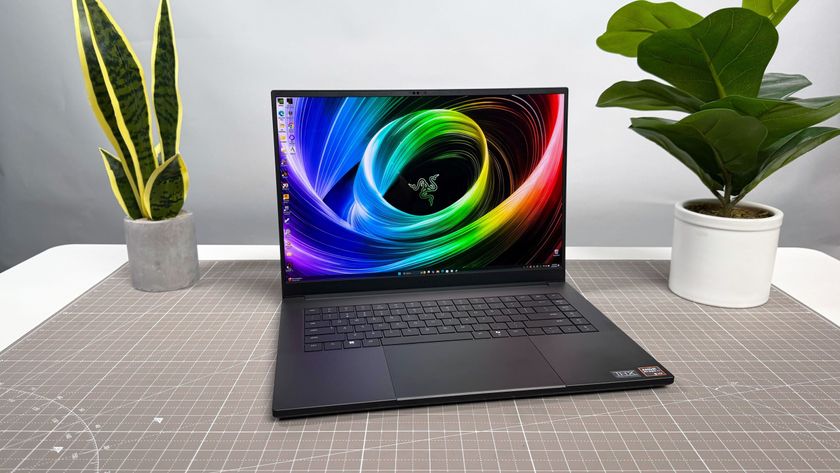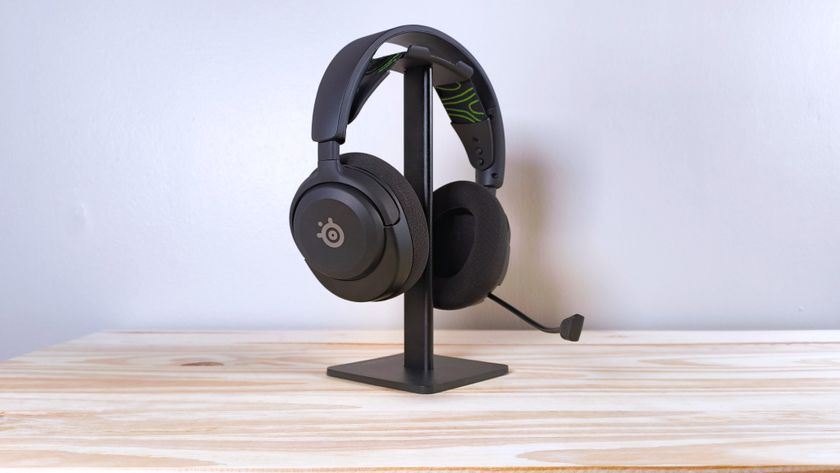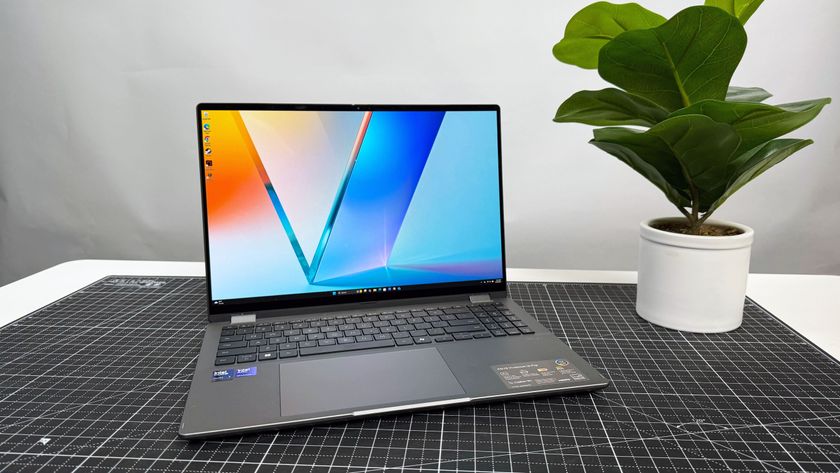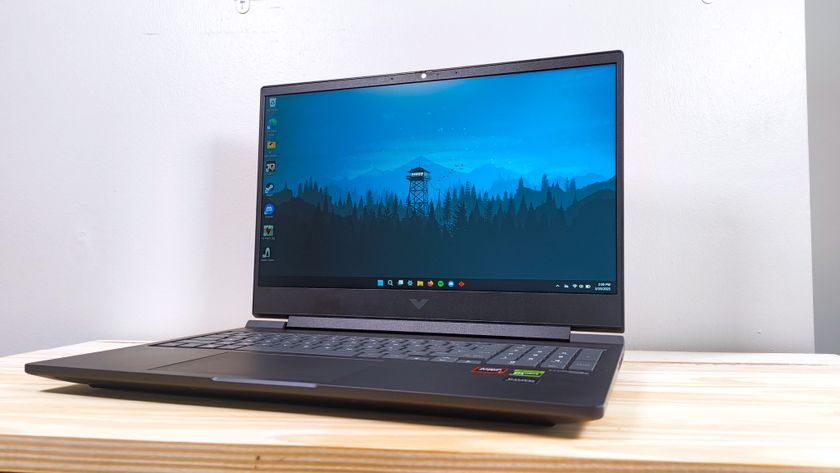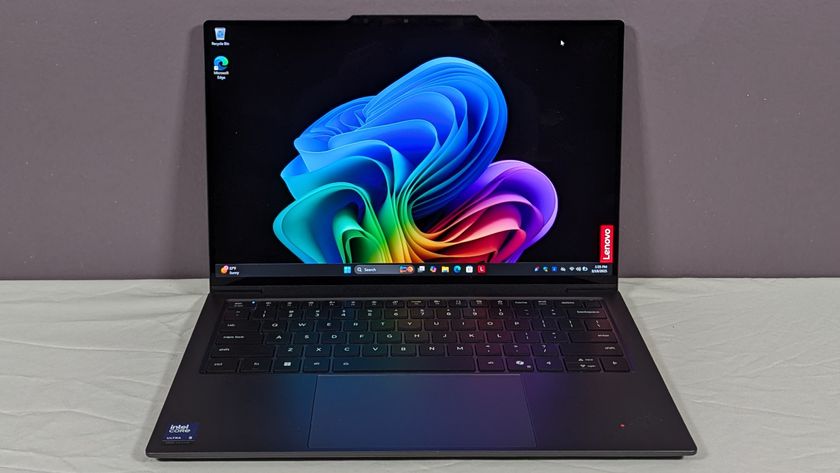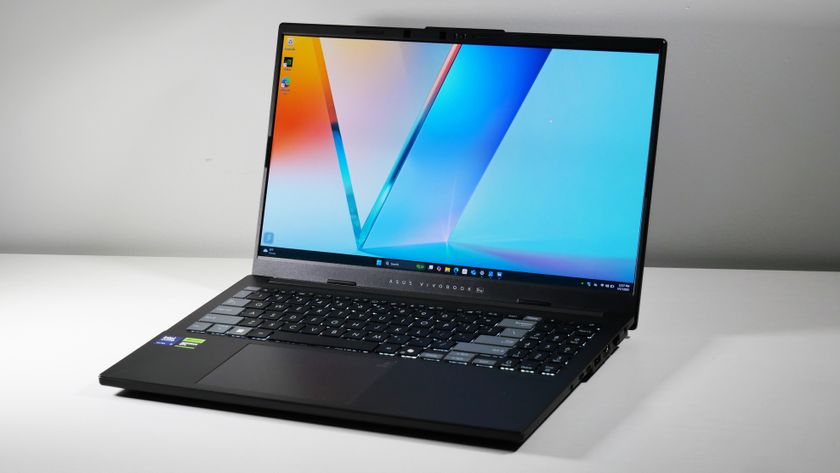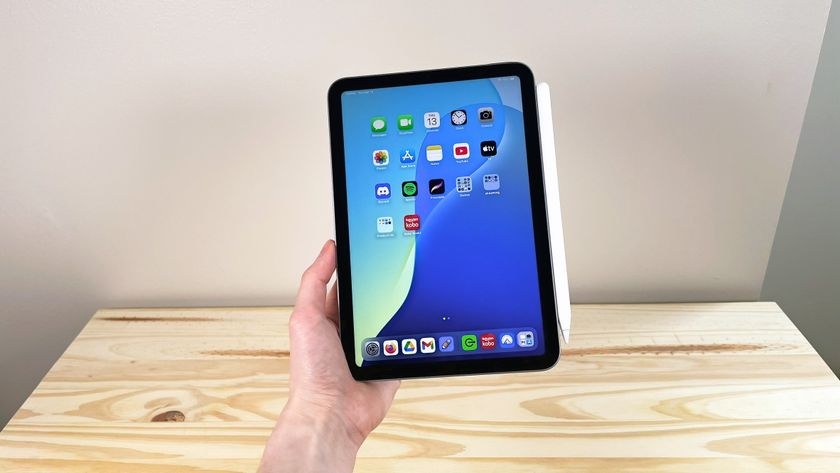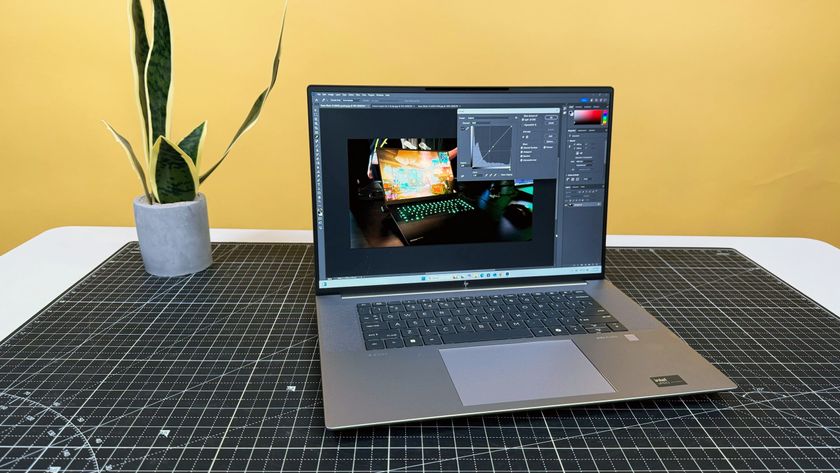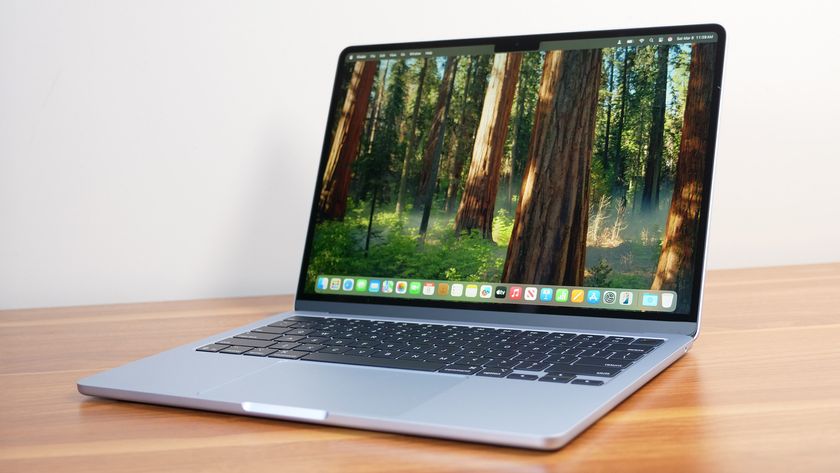Laptop Mag Verdict
Apple’s AirTags are small, lightweight and do the basics well, but require a recent iPhone to get the most out of the hardware.
Pros
- +
Excellent tracking capabilities
- +
Uses Ultra-Wide Band (UWB) tech
- +
Inexpensive
- +
Rugged, lightweight design
Cons
- -
Lacks keychain hole
- -
Needs accessories
- -
Can’t ping phone
- -
Can only track with Apple devices
Why you can trust Laptop Mag
Size: 1.25 x 1.25 x 0.3 inches
Weight: 11 grams
Range: 29-feet
Battery: Replaceable CR2032
Apple’s tracking device, the AirTag ($29 starting), does a good job of playing lost and found by using a combination of Bluetooth and Ultra-Wide Band (UWB) communications. Similar to Tile and Samsung Galaxy SmartTag devices, the AirTag is small and lightweight and works well whether your lost item is somewhere close in the house or waiting for you to return to the coffee shop. It’s all thanks to the help of the wider Apple community.
There are a few issues, like the lack of a keyhole or how the tracking only works within Apple’s software landscape. Still, by combining the latest chip technology with excellent software and ruggedness, AirTags can keep everything from keys to luggage from ending up in a parallel universe.
Apple AirTag pricing and configurations
Apple sells a single AirTag model for $29 each or four for $99. The competition is very close with Tile products going for between $25 (for the Mate) and $35 (for the Pro) and Samsung Galaxy SmartTags at $30. The upcoming SmartTag Plus is expected to sell for $40 each.
Shaped like a large coin, the round Apple tags lack a hole for attaching to keys, luggage or a favorite umbrella. Because of that, you’ll probably need a case, cover or strap to attach an Air Tag to your bag, keys and other accouterment, creating another Apple accessory ecosystem. These items range from Belkin’s $13 silicone key fob to the $450 Hermes luggage tag.
Apple AirTag Design
To start, the AirTags are small and round with a 1.3-inch diameter and are 0.3-inch thick. Slightly larger than a stack of four quarters, they’re smaller than the square-shaped Samsung Galaxy SmartTag (1.5 x 1.5 x 0.4 inches), although the Tile Mate tag leads with a 0.2-inch profile.
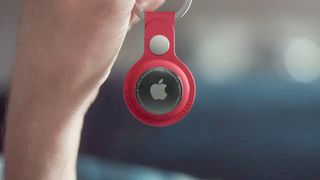
Aesthetically, the AirTag design is like a coin or an arcade token. One side is made of shiny stainless steel while the other is made of white plastic. You can order the AirTag with a variety of images or characters on the plastic side, like your initials or a special message to a forgetful friend. On the downside, early reports are that the steel side is far too easy to scratch, particularly for an item that will live in a pocket full of keys, pocket change and who knows what else.
By contrast, the Samsung SmartTags can be had in any color as long as its black but Tile breaks through the color barrier with its Tile Pro family. The tags are available in a variety of colors and patterns, some of which are on sale for a limited time.
An AirTag weighs 0.39 ounces, but the Tile Mate and SmartTag are a little lighter at 0.35 ounces. Inside, the AirTag has a battery, a doughnut-shaped circuit board and speaker. In addition to the expected Bluetooth tracking, the device has Apple’s U1 Ultra-Wide Band chip that creates trackable UWB signals; the CR-2032 battery should last about a year, according to Apple.
The big step forward (or backward) is that the AirTags lack a hole for attaching to a keychain or backpack clip. While you can just put the bottlecap-sized AirTag into a bag or jacket pocket, getting an AirTag is just the start because you’ll likely need to get a cover, strap or key fob to attach it to something you value.
The AirTag is among the most rugged items that Apple sells. It has an IP67 rating that translates into the device surviving being dunked in water up to 1-meter deep for up to 30 minutes. By contrast, Samsung’s SmartTag carries an IP52 rating, allowing it to stand up to water dripping on it while Tile’s Mate and Pro models have a slightly higher IP55 that makes them able to survive a water spray.
How AirTags Work
Inside each AirTag is a sophisticated tracking device that, like Tile and Samsung SmartTags, uses Bluetooth to locate the tag (and whatever it’s attached to). It changes the encryption key frequently so that the tag doesn’t open a security vulnerability.
The AirTags take a big technological step forward by also transmitting an Ultra-Wide Band (UWB) signal for a more precise location. The phone integrates data from the UWB signal, as well as the phone’s accelerometer and gyroscope to help home in on the target. At the moment, the AirTag is the only tracker that uses UWB, but there’s a big gotcha: the UWB technology only works with iPhone 11 or 12 models using iOS 14.5 or newer. There are rumors that it will be part of the next-generation iPads. Still, if your phone or iPad lacks UWB, it can still use Bluetooth.
Samsung has announced its UWB-powered Galaxy SmartTag Plus, but they’re not yet available. They will face a similar compatibility issue and only work with Galaxy Note 20 or newer phones. There is no word yet if the UWB tech will be incorporated into the company’s tablets or other products.
Apple AirTag Setup
One of the easiest tags to pair with a phone, AirTag is a snap to set up. Just put the new AirTag next to an iPhone or iPad and pull off the clear plastic cover. When removed, the tag’s battery connects and the tag starts up and makes a trilling sound.
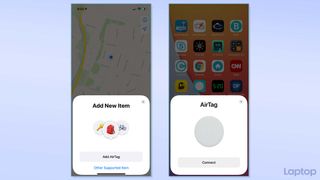
Now open the iPhone’s FindMy app; it’s the one with the green radar screen on its icon. The phone senses the new AirTag and shows a video of a spinning tag. At this point, I tapped Connect and gave the tag a name. Since it will be chained to a box-cutting knife that I can never find when I need it, I called it “Knife.” I chose an emoji that will show up on a map of its location.
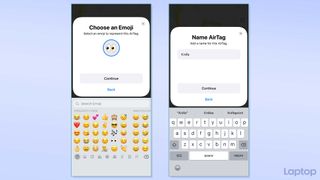
Finally, the interface shows a contact phone number if it does get lost. When the setup is complete, the tag plays its song. All told, it took about 2 minutes to set the first AirTag up. And adding additional ones for my keys and backpack was just as fast and easy.
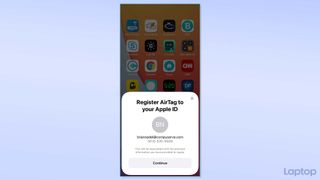
Apple AirTag performance
To gauge how the AirTags compare with Tile and SmartTags, I spent two weeks playing hide-and-go-seek with my tagged stuff. I left things around the house, at coffee shops and the park. When needed, I used my iPhone 12 to find them. It all worked quickly and efficiently, but the AirTags lack the ability to use the tag’s switch to ping my phone or the ability to warn me that I’m about to leave an item behind.
In addition to my iPhone 12, the AirTags worked well with my MacBook Air after I upgraded its software to Big Sur 11.3.1 software. On the downside, it only worked in Bluetooth mode and the communications were one-way as I was not allowed to ping the tag to help find it.
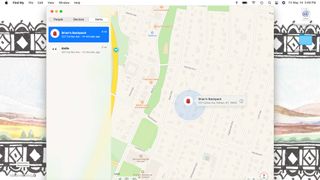
There’s a FindMy app for your iPhone and iPad, but nothing for Android products, PCs or Chromebooks. About the only thing you can do with an Android phone and AirTag is to view the owner-supplied information, like a contact phone number using Near Field Communications (NFC). It worked well with my Galaxy S9+.

Still, the world would be a better place if I could use my Android phone to track AirTags or use my iPad to track a SmartTag. At least it would be a world that’s safer for me to leave all sorts of things behind.
Apple AirTag Find Nearby Mode
Similar to Tile and Samsung’s SmartTags, finding the tag and your gear is split between local and long-distance locations. After getting my son to hide my tagged knife in a drawer, I went hunting for it. To start, I tapped Find Nearby on the FindMy interface to activate the precision mode. The phone showed a constellation of moving dots as it tried to pick up the tag.
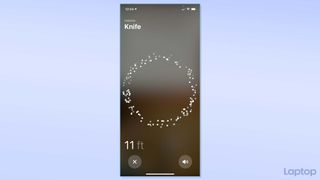
When it got a bead on the tag, the screen showed an arrow that pointed me in the right direction and noted that it was 15-feet away. One major innovation is that, as I got closer, I felt haptic vibrations on the right and left of the phone that gave me clues to where the tag (and my knife) was located.
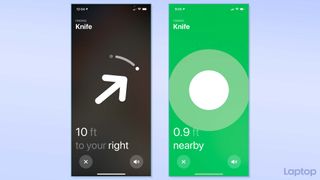
It worked just as well in a drawer, under a couch cushion and in a car’s glove box. Overall, the tag had an indoor range of 29-feet with an iPhone 12, but that depends on the idiosyncrasies of the structure and local interference. In the same location, the SmartTag had a 110-foot range with a Galaxy Note 20. You can also get an assist by way of Siri, by saying “Siri, find my knife.” The AirTag played its irritating tune, which helped me surface it.
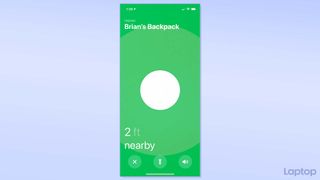
The screen can not only turn on the phone’s light for spotlighting the lost item under a couch but it can also make the tag play its distinctively annoying tune. Unlike Tile and SmartTag devices, you can’t change the AirTag’s song.
Apple AirTag Lost Mode
If you and your tagged item are farther afield, the AirTags can tap into the nearly billion iPhones and iPads out there.
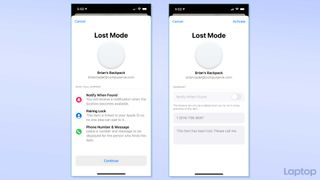
Tap Lost Mode and the FindMy app changes gear to incorporate the anonymous use of any iPhone or iPad that is within Bluetooth range of the tag. Those who don’t want to participate in this crowdsourced effort can opt out.
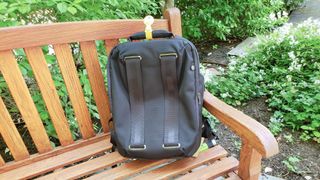
I left my AirTagged backpack on a park bench, something I’ve been known to do. When I was a quarter-mile away, I searched for it. The area appeared to be well-populated with iPhones and the system found my backpack in a matter of minutes.
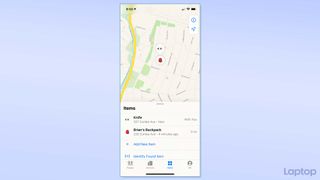
Apple AirTag Security
Tracking a lost item is all well and good, but what you don’t want happening is someone using your fancy AirTag to track you. In anticipation of all the creepers out there, Apple incorporated some anti-stalking provisions. For instance, every three days, the AirTag needs to reconnect with its host phone or it plays its tune to alert anyone in the area that it is active. If a would-be stalker surreptitiously placed a tag in your bag, your iPhone, iPad or iPhone, will get a message about the electronic hitchhiker.
Unfortunately, the alert makes no provision for those of us who own Android phones and tablets. Another downside, if you live with your stalker, presumably sometime during the day or night the phone and tag will be able to reconnect.
Apple AirTag battery life
Because it’s powered by a disposable CR-2032 battery, there’s a good chance you’ll need to change the AirTag’s battery roughly every year. Rather than prying the AirTag apart, it takes a little finesse to get inside.
Start by pressing on the stainless steel side and rotating it counter-clockwise.
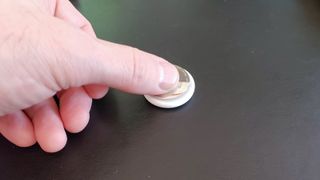
Work the lid loose.
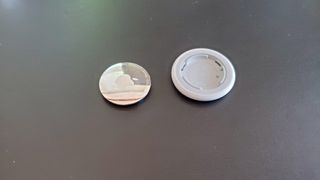
Remove the old battery and put a new one in place.
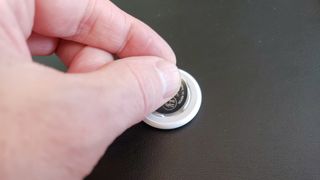
Close the tag by pressing and rotating the lid clockwise to lock it. It plays its tune when it starts up.
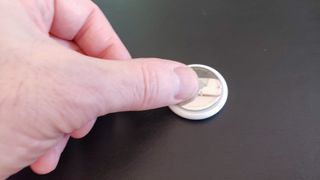
Bottom line
In a world that’s increasingly crowded with tracking tags, Apple’s AirTag stands out as an excellent first effort. Small, lightweight and attractively designed, the AirTags not only help locate lost things nearby or over a long distance, but the Ultra-Wide Band technology makes it easy, precise and a little fun. Its IP67 rating means it can stand up to dust, rain and the occasional swim. And as is the case with other Apple products, the company put a lot of effort into the software, which not only shows my lost items on a map but can garner the help of crowds to anonymously find my tagged items. Plus it’s only $29 and offers a fairly easy-to-replace battery.
However, there are a few issues. The stainless steel surface is prone to scratches. Plus, the AirTags lack something as simple as a hole for attaching a keyring, so you’ll likely need to invest in accessories like key fobs and luggage straps. And it lacks the ability to use the tag to find your phone or warn you that you’re about to leave a tagged item behind. And like many other Apple products, AirTags can only be tracked with iOS and macOS systems, leaving at least half the computing world out in the cold.
In the final analysis, the Apple AirTag is for those careless types – myself included – who leave keys, umbrellas and luggage in their wake. AirTags may not keep me from losing them, but it can help me find them quickly.
Apple AirTag Specs
| Size | 1.25 x 1.25 x 0.3 inches |
| Weight | 11 grams |
| Range | 29-feet |
| Battery | Replaceable CR2032 |
